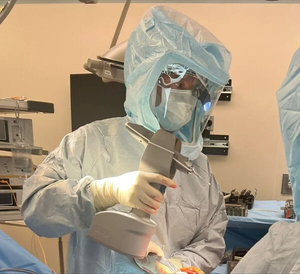Originally Published MDDI July 2006 COVER STORY: NANOTECHNOLOGY
July 1, 2006
COVER STORY: NANOTECHNOLOGY
Nanomaterials come in several shapes. Here are the definitions of a few types of nanostructures and how they are being applied to medical technology. Definitions courtesy of Sangeetha Prabakar, an analyst for Frost & Sullivan.
Nanopore: A protein channel in a lipid bilayer or an extremely small isolated hole in a thin, solid-state membrane. By tuning a single nanopore to the diameter of a DNA strand, it can be used as a DNA filter that also allows researchers to sequence a DNA strand.
Nanotubes: Carbon rods about half the diameter of a DNA molecule that can detect and locate the exact point of gene mutations. A nanotube is a member of the fullerene structural family, which also includes buckyballs. Buckyballs are spherical in shape; nanotubes are cylindrical.
Microscopic molecular dots or quantum dots: Nanosized crystals that exhibit all the colors of the rainbow because of their unique semiconductor qualities. They can glow continuously for months or years when they are stimulated by ultraviolet light. They are nontoxic compared with fluorescent dyes and, therefore, they are used as fluorescent probes in molecular biology applications.
Nanorods: Linear nanostructures such as nanowires and nanotubes that can be generated from different materials such as metals, semiconductors, or carbon. In a biological sense, their biocompatibility and antiinfective properties make them highly suitable for applications such as biocompatible implants, abacterial medical tools, and wound dressings.
Nanoshells: Minuscule gold-coated beads. By manipulating the nanoshell layer thickness, these beads can be designed to absorb specific wavelengths of light. Nanoshells that absorb near-infrared light can easily penetrate the human tissue deep down. They create an intense heat, which destroys cancer cells.
Dendrimers: Man-made molecules about the size of an average protein. They have a treelike branching shape and structure. This shape gives them vast amounts of surface area to which scientists can attach therapeutic agents or other biologically active molecules to facilitate drug delivery. Potential uses include detection and diagnosis.
Copyright ©2006 Medical Device & Diagnostic Industry
You May Also Like


